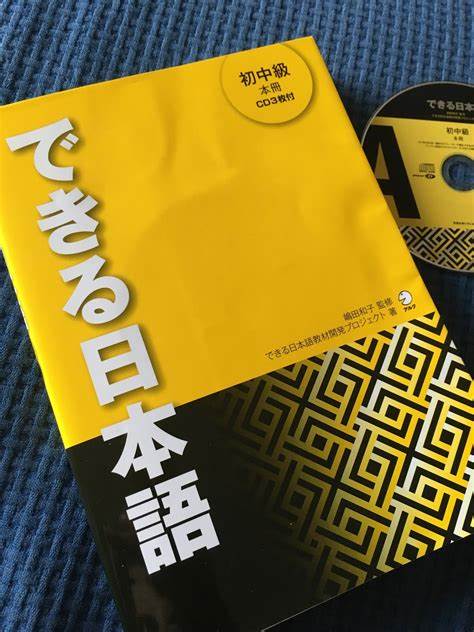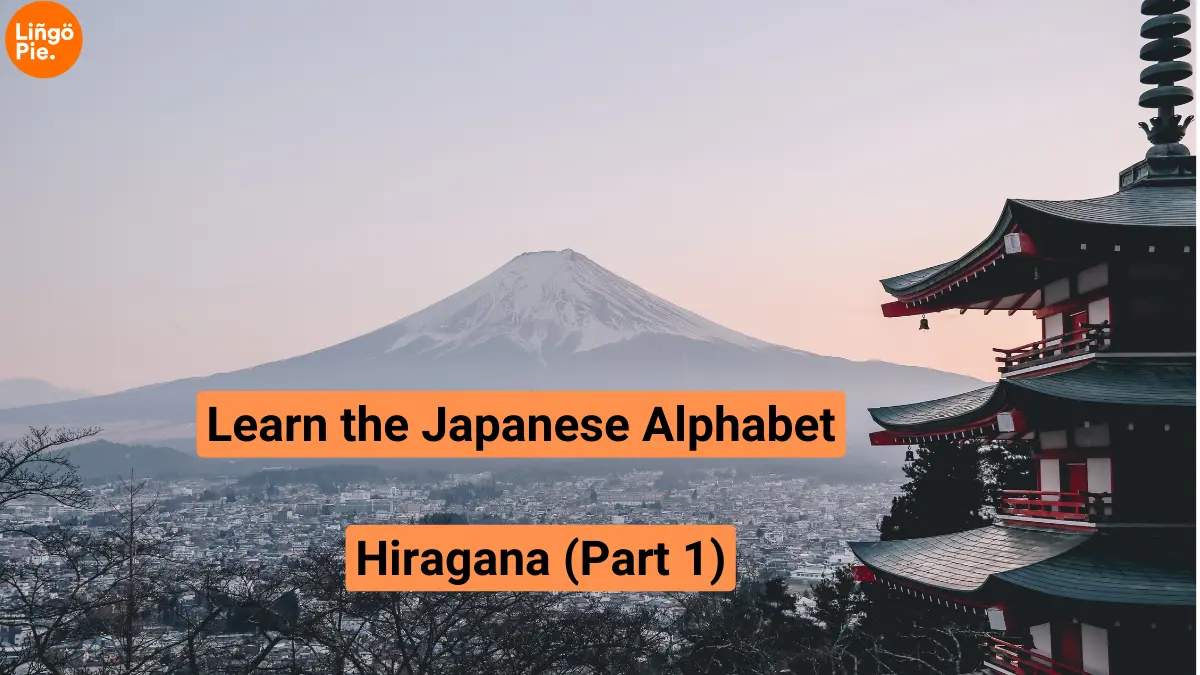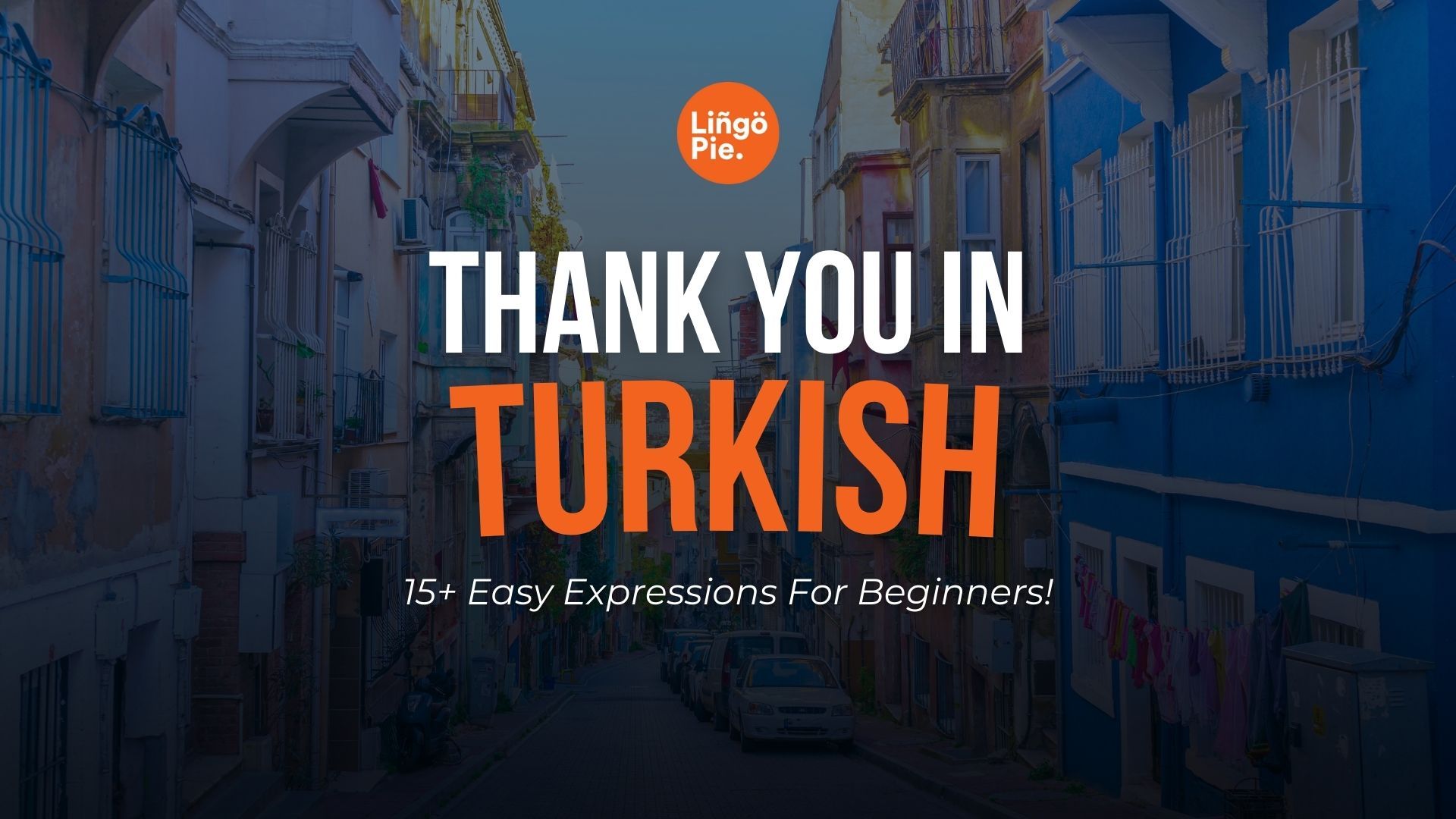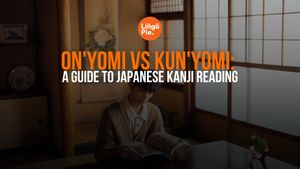Learning Japanese can be hard at times, both self-learning and taking lessons with a teacher. Spoken by 128 million people, Japanese is considered one of the most difficult languages for Native English speakers to learn.
Many aspects might make this language a hard one to master: pronunciation, three different writing systems all used at once, very different grammar, absence of subject and dependency on context, just to name a few. And don't forget about cultural differences!
However, we aren't here to scare you and say: 'Hey, don't learn Japanese because it's hard'. At the beginning, we said that it can be hard at times, but not always. With the right learning materials and resources, practice and a lot of patience (remember: patience is a virtue!) you'll end up mastering Japanese.
And one of those learning resources are books, which are ideal for structuring and organizing your study on Japanese. So, in this article, I'll show you 6 books and textbooks with their pros and cons. After reading this article, you will have a clearer view of the books used by Japanese students, making your learning journey much easier.

What's the best book to learn Japanese?
Great question. The short answer is that it depends on your learning goals. Do you want to learn grammar and vocabulary? Practice conversation and listening? Or just all the aspects of the language? However, you should know that there isn't such thing like a perfect book. Each one of them has positives and negatives.
(Note: this isn't a top, so the numbers next to the books' name don't reflect how good or bad they are)
1) Minna no Nihongo.
We start with the most famous one of all. Many Japanese learning schools used it for many years (and even today). Even the protagonist of the books, Mirā-san (Mr. Miller), is very well-known by most Japanese students.
Positives
- Well structured: Minna no Nihongo starts with the basics and little by little, lesson by lesson, you learn new grammar and vocabulary that, eventually, unlock new skills for the next unit.
- Lots of exercises, from vocabulary to grammar and writing.
- Immersive: it's only written in Japanese. This may scare absolute beginners, but there is a Rōmaji version of the first Basic Level book (初級1 shokyū 1), that may be useful to start with the first chapters. There is also a separate book that has vocabulary lists for each lesson and a grammar guide with explanations in English.
- Very complete: Apart from the main books (本冊 honsatsu), there are other complementary ones under the Minna no Nihongo name that cover different aspects of Japanese, such as grammar, reading, listening, writing, Kanji and conversation with videos.
- Different levels: there are textbooks for beginners, pre-intermediate and intermediate levels.
- Good for the Japanese Language Proficiency Test (JLPT for short, also known as 日本語能力試験 Nihongo Nōryoku Shiken), the international exam, due to its similarities in themes and structure. Although you'll need extra books to prepare yourself for the exam.
Negatives
- Complex for absolute beginners: since it's entirely written in Japanese, it may be hard for students that don't know the Japanese writing systems. Of course, a Rōmaji version and a grammar and vocabulary guidebook exist, but they're separate books and you must expend more money, which may not be affordable for some people.
- Expensive: to have the complete experience, you must buy every one of the Minna no Nihongo books, which it becomes very expensive.
- Too much focus on grammar and lack of a communicative standpoint.
- Out-dated vocabulary: some expressions can be considered unnatural or not used anymore in modern Japan.
- Lack of online resources: audio and conversation videos are only available on physical media, such as CD and DVD. No app or ebook version are available.
- Some illustrations and exercises might be confusing for some students.
2) Marugoto.
Created by The Japan Foundation, an institution that spreads the Japanese language and culture around the world, this series of textbooks centers around different topics in daily life, like family, food, work and more.
Positives.
- Colorful and nice design.
- Beginner friendly: exercises are explained in English and have Rōmaji so you can read without having studied the Japanese script.
- Focus on conversation and real life topics and events.
- Online resources: it has many complementary online resources, such as audios, Hiragana and Katakana sounds and explanatory videos about life in Japan. It also has complementary apps you can use to learn the Japanese writing systems, all of them developed by The Japan Foundation.
- Focus on Can-do: it's centered around communicative skills that you can do (hence the name) in different daily situations, from asking for directions to buying at a convenience store.
- Different levels: from absolute beginner to intermediate.
- Available on ebook.
Negatives.
- Lack of grammar exercises.
- Lack of explanations for grammar.
- Exercises too simple: some students may find the practice too easy for them.
- Some illustrations could be better.
- The excesive use of Rōmaji: in the absolute beginner level, all chapters are written in the Latin alphabet next to the Japanese text. This might make students not read in Japanese.
3) Irodori: Japanese for Life in Japan.

This is the newer textbook in this list. It was also created by The Japan Foundation in 2020 and it's like a spiritual succesor to Marugoto. It focuses on daily life topics in Japan.
Positives
- It's free: yes. You read it right. Irodori is free. You only have to download the PDF from its website.
- Colorful and nice design.
- Beginner friendly: each exercise is explained in both Japanese and English and the exercises are easy to do. The first lessons have Rōmaji. There are also grammar notes at the end of each unit to fully understand it.
- Focus on conversation: Irodori is designed for daily conversation in Japan. It covers many topics, such as work, hobbies, manga, anime, studying abroad, etc.
- Cultural notes: at the end of each lesson, you can read about cultural aspects of Japan and know more about it. Explanations are both in English and Japanese.
- Can-do check: like Marugoto, Irodori is focused on the Can-do system to develop communicative skills. It also has self appraisal exams at the end of the books to check your skills and how much you learned in each lesson, making it easier to register your learning progress.
- Online resources: audios are available online for free. It also can be used along with Marugoto and its online resources.
- Authentic resources: some excercises work with real life materials, like notes, photos, etc.
Negatives.
- Lack of grammar exercises.
- Lack of complementary books to strenghten language skills.
- Exercises too simple: some students may find the practice too easy for them.
- Lack of an intermediate level. Only for beginners and pre-intermediate.
4) Dekiru Nihongo

Centered around conversation and with levels beginner to intermediate, Dekiru Nihongo is another great option for learning Japanese.
Positives.
- Nice design.
- Communicative approach: you practice conversation a lot with this book.
- Centered on daily life topics: each lesson has a different topic, like work, shopping and more, and vocabulary and exercises are built around them.
- First try: Dekiru Nihongo gives a situation with the question 'what would you do in this context?' and you thinks ways to communicate with the knowledge you have. Then, with the exercises and new phrases, try the same situation again to get better and make progress.
- Different levels.
- Available on ebook.
Negatives.
- Lack of grammar and writing exercises.
- No explanations about grammar.
- Progress might be a bit slow sometimes.
- Some lessons have too much information and may be hard for beginners.
- Some exercises might be too easy, even in higher levels.
5) Genki: An Integrated Course in Elementary Japanese.
This is another famous textbook for learning Japanese, alongside Minna no Nihongo. It's used at many universities and Japanese schools.
Positives.
- Focus on communication, both oral and writting.
- Explanations in English for grammar and vocabulary.
- Many illustrations.
- Well structured: it helps you to have a clear accountance of your progress.
- Complementary resources: apart from the main course book, it has an activity book and also there is a separate Kanji book with illustrations to help you memorize each Kanji. Videos with live action actors are also available.
- Focus on Japanese culture.
Negatives.
- Some explanations about grammar might feel short or be incomplete.
- Expensive: it might not be affordable for some students to have all the required books, similar to Minna No Nihongo.
- Incomplete vocabulary for some topics.
- Live action videos may not be good.
6) Japanese The Manga Way
This one is great if you want to learn or revise Japanese grammar through manga.
Positives.
- Lots of explanations in English about grammar, vocabulary and Japanese script.
- Each chapter covers different grammar topics, such as particles, verbs/adjetives conjugations, polite language, etc.
- Explanations are tied to cultural background, so you learn why is a grammar used in that context.
- Many manga panels.
Negatives.
- Lack of exercises.
- Limited vocabulary.
- Not suitable for absolute beginners.
Some final words.
As you see, there are many options to learn Japanese, and each of them has its strengths and weaknesses. It's up to you to choose the best one. This will depend on your learning needs.
As a teacher myself, my advice is to combine every resource you can find to have the best learning experience, both self study or with a teacher. Don't get limited to textbooks. Always add new options, like Lingopie, which gives you true immersion and an authentic learning experience in Japanese with great TV. Sign up and start today your Japanese learning adventure! Have fun!
Related posts:



Let's answer some questions.
1.Can I learn Japanese through books?
Of course. Having a book or textbook organizes your learning and it helps you to check your progress. But, you shouldn't limit yourself to the book. There is much more than written pages. A language is like a living being that is constantly changing. Study using your book, but also chat with natives, listen to music or watch TV and movies (like with Lingopie). Like we said in the previous question, the more resources you incorporate to your learning, the better.
2.What is the best way to learn Japanese language?
There isn't a unique way to learn Japanese or any other language. It depends on the person. Some learn better with books, other with manga, other with TV and movies and some with music. There are also people who learn the language by speaking with natives. So, the best way for you might not be the best for another person. What's important is that you feel comfortable with it and make progress. Also, try to incorporate as many resources as you can to your learning: books, TV, music, speaking with natives, etc.
3.Is it possible to self taught Japanese?
Yes, it is possible. However, it requires time scheduling and perseverance. What is also important is to choose the right learning tools. If you go solo and you are going to choose a book, check if it's suitable for self teaching. Some books were made with a student group in mind and may not be the right choice because most exercises may require a partner to do them. But, you also can ask a friend, choose a book and start learning by yourselves.
4.What should I study first in Japanese?
The writing systems and basic greetings are the first things to study in Japanese. The basic script, called Kana (Hiragana and Katakana), is the key to Japanese learning if you're going to study it seriously. While you're learning the script, you can study words and make sentences with Latin alphabet or Rōmaji. It's also a must to check if a book is beginner friendly. But, if you're going for a conversational approach, that won't be necessary and only the basic greetings will be needed at the beginning.
5.How many hours of study does it take to learn Japanese?
This will depend on how much time per week you put on studying and on your skills. Some people make progress quickly and others a bit slower. If you choose a book, it also depends on how well structured the book is and how long the lessons or chapters are. Some textbooks, like Irodori or Marugoto, even tell you that each lesson can be completed in three hours approximately. But this may vary according to students' skills and how much complementary study you do. The best way is to set a time schedule weekly (1 hour per day, for example) and register the amount of time it takes to learn certain topics or lessons.






![How To Write The Japanese Kanji For Love [Guide]](/blog/content/images/size/w300/2025/03/Japanese-Kanji-for-Love-1.jpg)
![A Guide To Kansai-ben Dialect For Beginners In Japanese [2025]](/blog/content/images/size/w300/2025/03/Kansai-ben-dialect.jpg)

